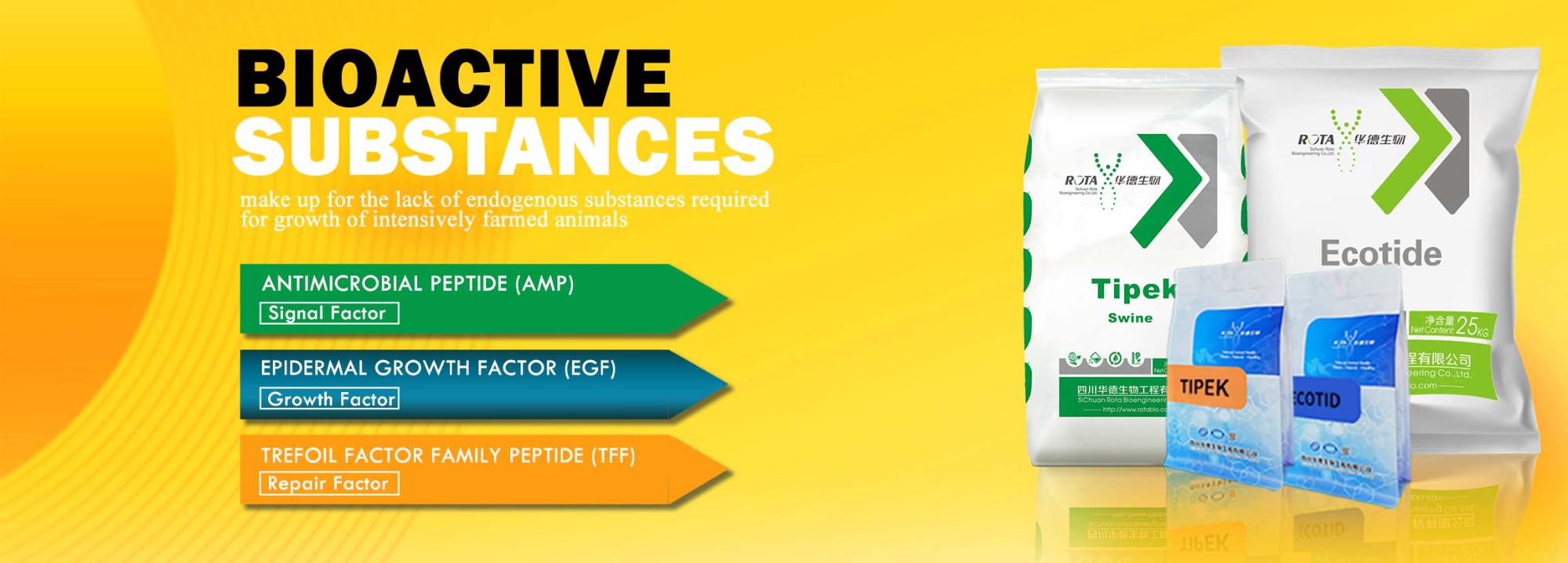Broiler International/China Market
Supply and Demand Analysis
Source from China Poultry Net
International market supply and demand situation
Production situation
The main international chicken production countries include the United States, Brazil, China, the European Union, Russia and other countries. Among them, the United States has the largest chicken production in the world, with an average production of 19.13 million tons from 2012 to 2023, accounting for 20.34% of the world's chicken production; Brazil is the country with the second largest chicken production in the world, accounting for 14.47% of global chicken production; China's chicken production ranks third in the world, accounting for 14.31% of global chicken production.
Due to the improvement of global production capacity, chicken production has generally shown a steady growth trend, but there was also a decline in global chicken production in 2016. In 2012, the total global chicken production was 84.91 million tons, and by 2023 it is expected to be 103.52 million tons, with an average annual compound growth rate of 1.66%. In recent years, the growth of global chicken production has slowed down. Since the year-on-year growth rate reached a peak of 5.03% in 2019, the growth rate has shown a downward trend, with the year-on-year growth rate in 2022 being only 0.85%.
As the world's largest chicken producer, the United States' production capacity has maintained a long-term growth trend, from 16.86 million tons in 2012 to 20.99 million tons in 2022, with an average annual growth rate of 2.01%. However, in recent years, the growth rate of chicken production in United States has also gradually slowed down. Affected by the Covid-19, the production growth rate in 2020 was 1.57%, and the growth rate in 2021 was only 0.67%. The growth rate of chicken production will not recover until 2022.
China's chicken production fluctuates greatly. From 2012 to 2017, chicken production generally showed a downward trend. After 2017, the production gradually increased, and gradually stabilized at around 145,000 tons after 2020. The growth rate trend is in line with the global trend. Relatively similar, in recent years, China's chicken production growth rate has shown a clear downward trend. In 2020, the year-on-year growth rate was 5.80%, falling to 0.68% in 2021, and by 2022, the growth rate dropped to negative value, to -2.72%.
Consumption situation
Chicken is an important meat consumer product in the world. Since 2012, chicken consumption has shown an upward trend, and the trend is basically the same as global chicken production. Since 2016, chicken consumption has increased year by year. In 2016, global chicken consumption reached 87.66 million tons. By 2023, chicken consumption will reach 100.89 million tons, with a compound annual growth rate of 1.65%. In recent years, the consumption growth rate of chicken products has been slowing down. Since 2019, the year-on-year growth rate has been declining. By 2022 Annual chicken consumption growth was only 0.83% year-on-year, basically the same as the growth rate of global chicken production.
In terms of consumption, the United States is still the largest country in the world, accounting for 17.34% of global consumption. China's chicken consumption accounts for 14.72% of global consumption, ranking second in the world. Chicken consumption in the United States has been increasing year by year since 2012. In 2012, chicken consumption was 13.5 million tons, and by 2022, chicken consumption reached 17.7 million tons, with an average annual growth rate of 2.44%.
China is different from the United States. China's main source of meat is pork, and chicken is the second largest source of meat. Therefore, consumption fluctuates relatively sharply. Chicken consumption generally showed a downward trend from 2012 to 2017. In recent years, as people's diet structure changes, Due to changes, chicken consumption has increased. China's chicken consumption was approximately 15 million tons in 2021 and 14.4 million tons in 2022, both at historical highs.
Import situation
In the international trade system, the main importing countries of chicken are Japan, Mexico, the United Kingdom, Saudi Arabia, Iraq and China. These seven countries account for 51.4% of the total global imports. Among them, Japan accounts for 10.13% and is the country with the largest import volume in the world, while China's import accounted for 4.93%.
Japan's chicken imports have been relatively stable over the years. Since 2017, Japan's chicken imports have remained at around 1.06 million tons. China's chicken imports fluctuate greatly. From 2012 to 2020, chicken imports showed an increasing trend. In 2012, the import volume reached 0.25 million tons, and by 2020 it reached 1 million tons. However, after 2020, the import volume of chicken dropped rapidly. By 2022, chicken imports decline to 0.63 million tons.
Export situation
The main exporting countries of chicken are Brazil, the United States, the European Union, Thailand, China and other countries. These five countries account for 83.98% of global exports and the vast majority of global exports. Among them, Brazil is the country with the largest export in the world, accounting for 83.98% of global exports. The proportion of chicken exports is 33.16%; the United States is the second largest chicken exporter in the world, accounting for 26.91% of the world; China's export volume ranks fifth in the world, accounting for 3.61% of global exports.
From 2012 to 2023, Brazil's chicken export volume has been basically stable, generally maintaining a slow growth trend. From 2012 to 2020, Brazil's export volume has remained basically unchanged, fluctuating around 3.8 million tons, and has grown slowly since then. Until 2022, 4.45 million tons, Brazil's export volume increased by 14.69% from 2020 to 2022.
China's export volume is very small compared to Brazil, and the export volume is very stable. The average annual export volume is only 0.44 million tons. In 2012, the export volume was 0.41 million tons. By 2022, the export volume was 0.53 million tons. The growth rate is 29.27%, but the base is too low.
China market supply and demand
Ancestral production capacity
The main white-feather broiler breeds in the Chinese market include Kebao, AA+, Shengze 901, Ross 308, Li & Fung, Guangming 2, Ward 188, Hubbard, etc. According to data from MySteel.net, in the first quarter of 2023, the variety with the largest proportion of total introductions is Kebao, accounting for approximately 38.52%. Since the China National Livestock and Poultry Genetic Resources Committee approved three types of white-feather broilers, "Shengze 901", "Guangming 2" and "Ward 188" in December 2021, China's white-feather chicken breeding market has successfully broken the foreign monopoly.
The overall trend of the ancestral inventory since 2017 has been firstly decreasing and then increasing. In early January 2017, the ancestral inventory was about 1.3198 million units. By mid-September 2018, the ancestral inventory dropped to 1.0967 million units. Since then, the inventory has continued to rise. Until the end of November 2020, it reached 1.5652 million units. From December 2020 to February 2023, the ancestral inventory remained basically stable, with the inventory fluctuating between 1.6 million and 1.8 million units.
Parental production capacity
The production of the parent generation is the intermediate link between the ancestor generation and the commercial generation, which directly determines the future supply of the commodity generation. According to data from the Poultry Branch of the China Animal Husbandry Association, in early January 2017, the total number of parental stock at the sample point was approximately 24.7997 million units. By early January 2020, the stock had dropped to 24.0248 million units. Since then, the total number of parental stock has entered a period of rapid growth period and continues until February 2023. As of mid-February 2023, the number of parental generation units in the sample points has reached 36.8148 million units. In terms of price, the price range of parent chicks is relatively large, ranging from 0.9 to 11.23 USD per set.
Supply of commercial chicks
The overall sales volume of commercial chicken chicks also showed a trend of first decreasing and then increasing. From 2017 to 2019, the sales volume of commercial chicken chicks fluctuated and decreased, with weekly sales fluctuating between 50 and 60 million. Since then, sales have shown an upward trend until November 2022.
In terms of the price of chicks, the price of commercial generation chicks fluctuates violently, generally rising first and then falling. It is roughly the opposite trend to the sales volume of commercial generation chickens. However, it can be seen that the fluctuations in sales volume are far less dramatic than the price fluctuations. The highest price of Commercial generation chicks was in early November 2019, reaching 1.54 USD per bird; the lowest price was in early January 2020, only 0.03USD per bird. The highest price was about 55 times higher than the lowest price.
Broiler chickens out
At present, China's chicken market is still relatively fragmented. According to data from the White Feather Broiler Alliance, the CR4 of the white feather broiler industry in 2021 is 29.69%. The top four companies with market share are EllHope Shares (10.34%), Sunner (8.12%), and CP Group (5.75%), New Hope (5.47%). Overall, the number of white-feather broiler chickens sold is on an upward trend. In 2019, 5.42 billion white-feather broiler chickens were sold. By 2022, 7.51 billion white-feathered broiler chickens were sold, an increase of 15% compared with the previous year.
At present, the main production areas of white-feathered broilers in China are concentrated in Shandong, Liaoning, Hebei, Fujian and Jiangsu. The total slaughter volume of these five provinces accounts for more than 80% of the country's total. Data from the White Feather Broiler Alliance shows that China's white feather broiler slaughter volume will reach 7.516 billion in 2022, of which Shandong Province's slaughter volume will reach 3.469 billion, an increase of 20.62% compared to 2021; Liaoning Province's slaughter volume will reach 1.351 billion, a year-on-year increase of 1.96%; Fujian Province slaughtered 620 million animals, an increase of 10.32% compared to the previous year. Shandong Province occupies a pivotal position in the supply of white-feather broiler chickens nationwide. Data in 2022 show that Shandong Province alone accounts for 46.15% of the national white-feather broiler slaughter volume, accounting for almost half of the national slaughter volume, and exceeds Liaoning, Fujian, and Hebei , the sum of Jiangsu.
China Domestic demand
Demand for meat alternatives
Chicken is China's second largest source of meat, with domestic consumption second only to pork. In 2021, poultry meat consumption accounted for 27% of meat consumption. Chicken constitutes the vast majority of poultry meat. Chicken accounts for about 66% of total poultry meat consumption in 2021. In the chicken market, white-feather broilers account for 57% of the market. Yellow-feather broilers account for a relatively lower share 27% of the total chicken market. The advantages of white-feather broilers in production efficiency were eventually transformed into market economic advantages. As people's health awareness increases, meat with lower fat content will become more popular. Public information shows that the average fat content of chicken is about 10%, which is 4% lower than beef and 7% lower than mutton. Compared with the average fat content of chicken, Pork and chicken, which contain about 21% of pork, are rare high-quality, low-fat and high-protein meats. At the same time, they have a cost advantage in the market due to their low material-to-meat ratio. The market demand for chicken is expected to be further tapped.
As the second largest meat consumer product in China, chicken has a certain complementarity with pork. Usually, in years when pork prices rise, chicken consumption will increase. From 2014 to 2018, domestic pork and chicken consumption showed a downward trend. In 2014, chicken consumption was 12.99 million tons, and in 2018 it was 11.60 million tons. In four years, chicken consumption fell by 10.7%, and pork consumption fell by 10.7%. Consumption decreased from 58.65 million tons in 2014 to 55.30 million tons in 2018, a decrease of 5.71%.
However, since June 2018, pork prices have begun to rise rapidly after experiencing a brief trough. Wind data shows that the average market price of pork on January 5, 2018 was 2.98USD/kg. Since then, market prices have continued to rise as a whole. , as of February 14, 2020, the average price of pork has reached 7.06/kg, and the average daily growth rate has reached 0.84%. During the period when pork prices remained high from 2019 to 2021, the price of chicken fluctuated between 1.78-2.74 USD/kg. During this period, chicken consumption remained high and showed an opposite trend to pork consumption. Since 2022 the beginning of the year, as pork prices have gradually returned to normal, chicken consumption has begun to decline, moving in the opposite direction to pork consumption.
Chicken demand structure
There are four main uses of chicken products in China: fast food, group meals, retail and food reprocessing. Among them, group meal consumption and fast food consumption account for the vast majority of chicken consumption, and their proportions are not much different. Group meal consumption accounts for 35% of white feather broiler chicken consumption is mainly supplied to schools, canteens of enterprises and institutions and other departments that provide centralized catering; fast food consumption accounts for 33%, mainly supplied to fast food restaurants such as KFC, McDonald's and Dicos.
Summarize
China's white-feathered broiler industry chain includes upstream animal protection, broiler feed, and breeding companies, midstream broiler breeding companies, and downstream slaughterhouses, catering companies, meat product companies, and consumers.
From an upstream perspective, breeding companies are mainly dominated by foreign breeding companies such as Aviagen, Cobb, and Hubbard. The three companies occupy 95% of the global white-feather broiler breeding market; in terms of feed, broiler feed is mainly composed of corn and soybean meal, with an average of In terms of corn, corn accounts for about 59%, and soybean meal accounts for about 28%. White-feathered broilers are common poultry with low FCR, and have higher production efficiency than other poultry. Because white-feathered broilers have relatively weak disease resistance, the outbreak of influenza will affect consumer sentiment and production capacity supply.
From the midstream point of view, the complete intergenerational breeding system of white-feather broiler chickens includes a total of 5 generations of broiler chicken breeding, which are pure line original breed, great-grandparent generation, grandparent generation, parent generation, and commercial generation. A large number of Chinese ancestor chickens are introduced from abroad and was produced domestically in 2021. Grandfather chicken passes muster. White-feathered broilers take a shorter time to be put on the market. It takes about 7 weeks from hatching chicks to being put on the market. It takes about 77 weeks (1.48 years) from the ancestor introduction to the commercial generation.
From a downstream perspective, white-feather broiler chickens are demanded by slaughterhouses, catering companies, meat product processing industries and consumers. They mainly flow into the market through group meals, fast food, retail and food processing, of which group meals account for about 35%, and fast food accounts for about 33%, they are the main sales channels for white-feather broilers.
At the international level, China is a major producer and consumer of chicken. USDA data shows that China is the third largest chicken producer and the second largest consumer of chicken in the world, accounting for 14.3% of global chicken production and 14.72% of global consumption. According to USDA estimates, China's chicken production in the 2023 market year will be 14.3 million tons, accounting for 13.81% of the world; consumption will be 14.51 million tons, accounting for 14.38% of the world; imports will be 0.725 million tons, accounting for 6.51% of the world.
At the domestic level, China's white-feathered broiler chicken stock has been around 1.6-1.8 million sets over the years, and the annual slaughter volume of white-feathered broiler chickens in 2022 will be about 7.5 billion.

|
 Cattle and Sheep 100 Questions Ⅳ
Cattle and Sheep 100 Questions Ⅳ
 Discussing the Importance of Deworming Beef Cattle
Discussing the Importance of Deworming Beef Cattle
 In broiler chicken breeding, if this disease cannot be prevented, sporadic deaths will continue until they are out!
In broiler chicken breeding, if this disease cannot be prevented, sporadic deaths will continue until they are out!
 Cattle and Sheep 100 Questions Ⅱ
Cattle and Sheep 100 Questions Ⅱ